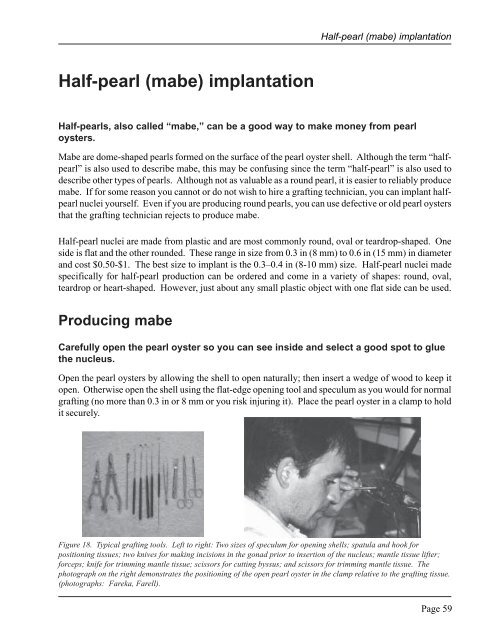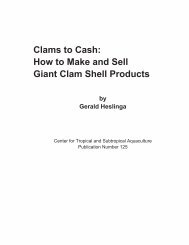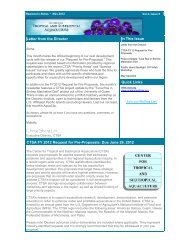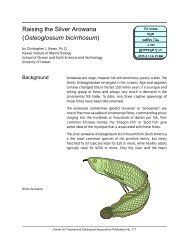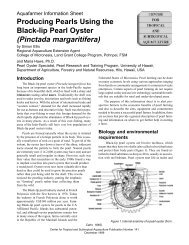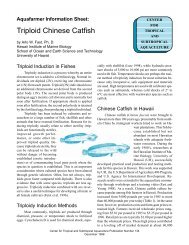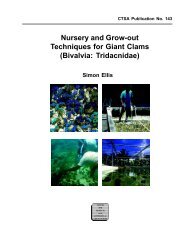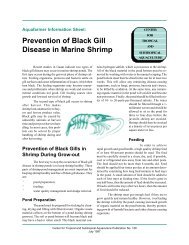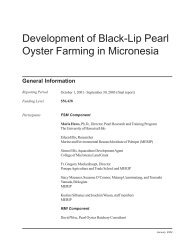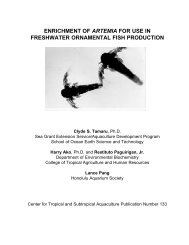The Basic Methods of Pearl Farming: A Layman's Manual - CTSA
The Basic Methods of Pearl Farming: A Layman's Manual - CTSA
The Basic Methods of Pearl Farming: A Layman's Manual - CTSA
You also want an ePaper? Increase the reach of your titles
YUMPU automatically turns print PDFs into web optimized ePapers that Google loves.
Half-pearl (mabe) implantationHalf-pearl (mabe) implantationHalf-pearls, also called “mabe,” can be a good way to make money from pearloysters.Mabe are dome-shaped pearls formed on the surface <strong>of</strong> the pearl oyster shell. Although the term “halfpearl”is also used to describe mabe, this may be confusing since the term “half-pearl” is also used todescribe other types <strong>of</strong> pearls. Although not as valuable as a round pearl, it is easier to reliably producemabe. If for some reason you cannot or do not wish to hire a grafting technician, you can implant halfpearlnuclei yourself. Even if you are producing round pearls, you can use defective or old pearl oystersthat the grafting technician rejects to produce mabe.Half-pearl nuclei are made from plastic and are most commonly round, oval or teardrop-shaped. Oneside is flat and the other rounded. <strong>The</strong>se range in size from 0.3 in (8 mm) to 0.6 in (15 mm) in diameterand cost $0.50-$1. <strong>The</strong> best size to implant is the 0.3–0.4 in (8-10 mm) size. Half-pearl nuclei madespecifically for half-pearl production can be ordered and come in a variety <strong>of</strong> shapes: round, oval,teardrop or heart-shaped. However, just about any small plastic object with one flat side can be used.Producing mabeCarefully open the pearl oyster so you can see inside and select a good spot to gluethe nucleus.Open the pearl oysters by allowing the shell to open naturally; then insert a wedge <strong>of</strong> wood to keep itopen. Otherwise open the shell using the flat-edge opening tool and speculum as you would for normalgrafting (no more than 0.3 in or 8 mm or you risk injuring it). Place the pearl oyster in a clamp to holdit securely.Figure 18. Typical grafting tools. Left to right: Two sizes <strong>of</strong> speculum for opening shells; spatula and hook forpositioning tissues; two knives for making incisions in the gonad prior to insertion <strong>of</strong> the nucleus; mantle tissue lifter;forceps; knife for trimming mantle tissue; scissors for cutting byssus; and scissors for trimming mantle tissue. <strong>The</strong>photograph on the right demonstrates the positioning <strong>of</strong> the open pearl oyster in the clamp relative to the grafting tissue.(photographs: Fareka, Farell).Page 59


